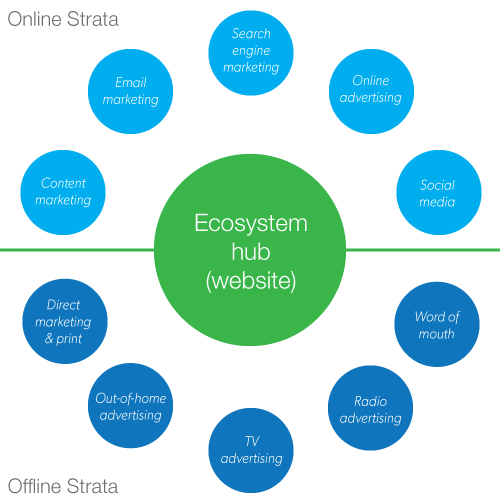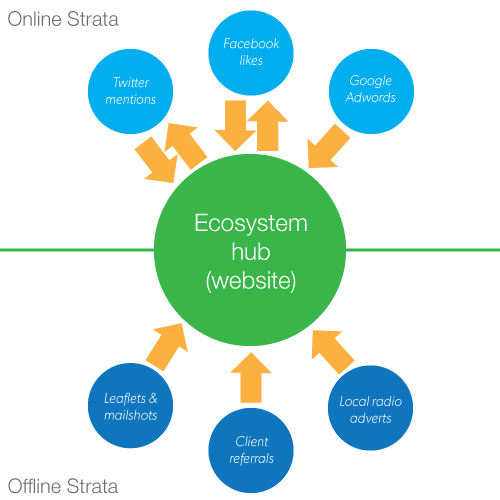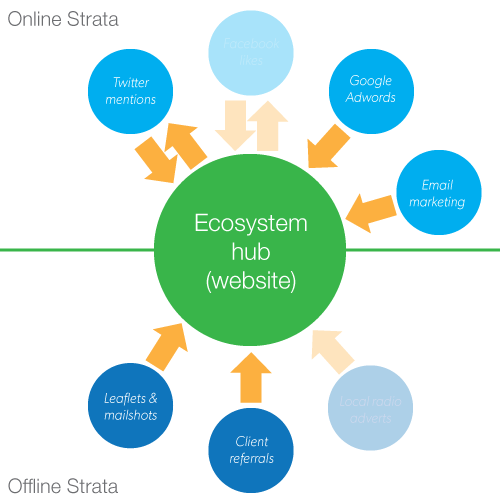The World Wide Web has come a long way in the last decade. As a species, our drive to connect, communicate and explore has given rise to a number of revolutionary online environments that have allowed people separated by thousands of miles to communicate at any time of the day, and with little cost. Facebook and Twitter are currently the most used social platforms, with Google+ and business-orientated LinkedIn also popular. Then there are the online platforms that were once a hit, like MySpace, Bebo and Hi5, which have quickly been abandoned by users seeking newer communication experiences.
Current risks
The buzz around social media has caused many organisations to jump in head first without a real understanding of how best to use social marketing, let alone capitalise on it. More worryingly, many organisations are putting more focus on a social networking presence and social advertising than on their own websites, meaning their online business model is at the whim of third-party companies who have no direct vested interest in return. Any changes to terms of use by Facebook, Twitter or LinkedIn can directly affect companies who have invested time and money up to that point.
The risk isn’t just from the social network execs – the users themselves can decide to up and leave of their own accord. Most people follow trends, and if a new social platform or app is gaining traction on the web users will switch without a second thought. Social media users are not loyal to the platform they use, they are loyal to their network of friends.
The ecosystem
Over the last year, when working with our clients, we have slowly established what we call the Brand Identity Ecosystem which is a web strategy that aims to develop, nurture and evolve an organisation’s online presence. It is called an ecosystem because of its likeness to an organic, interconnected and evolving environment, where each element feeds into some or all of the other elements. At the heart of the ecosystem is, and will always remain, the organisation’s website. This acts as the central hub of the web presence and ensures the organisation has full control over their branding and content.
 Fig 1: The Brand Identity Ecosystem with all of its possible elements.
Fig 1: The Brand Identity Ecosystem with all of its possible elements.
Extending the Ecosystem
Extending the ecosystem are a number of online and offline marketing elements, whose purpose is to tap into various audiences to promote the organisation. Elements in the offline strata will, more often than not, work to send the audience to the website content. For example, a radio advertisement can mention the website address for listeners to learn more about a service.
 Fig 2: An example of an organisation’s ecosystem
Fig 2: An example of an organisation’s ecosystem
Elements of the online strata, however, may work both ways. For example, content on the central hub (website) can be promoted on Twitter and Facebook using share buttons, which, in turn, brings new visitors who are interested in the content back to the website.
The ecosystem configuration will vary depending on the type of organisation it belongs to, because some elements in each strata are more suitable than others.
Evolving (and protecting) the ecosystem
An ecosystem is very likely to change over time as investing in certain marketing elements becomes unviable. MySpace was once the most popular way to connect online but Facebook provided users with better features and a cleaner user interface, so millions of users made the switch. User migrations like this are totally out of the control of any organisation, so investing time and resources in a social presence needs to be considered carefully.
 Fig 3: An organisation’s ecosystem that has evolved.
Fig 3: An organisation’s ecosystem that has evolved.
To protect the ecosystem, an organisation needs to continuously review whether participation in these various platforms are helping to meet their online business goals. All content should be posted to the ecosystem’s central hub (the organisation’s website) and then promoted on the ecosystem’s extensions (online & offline elements). Posts on Facebook or Twitter should be teasers that encourage users to visit the organisation’s website to view the full content, while there are occasions where the content can be duplicated on the social platform itself, as with Google+.
This regular analysis and review of the performance of one’s social activity means that if it no longer becomes viable to use the service, the organisation can switch to the new popular one. If a mass user migration occurs – i.e. when users start to move to the more popular platform – the organisation still owns the content on their website, it isn’t stuck on the previous platform needing to be transfered over. All that is required is for the existing content to be promoted just like before.
The official definition
The Brand Identity Ecosystem takes three existing concepts; the content management system; user experience design; content strategy; and merges them into a strong but agile web presence that allows for flexible social media participation, all the while keeping business goals at the forefront of decision making.


